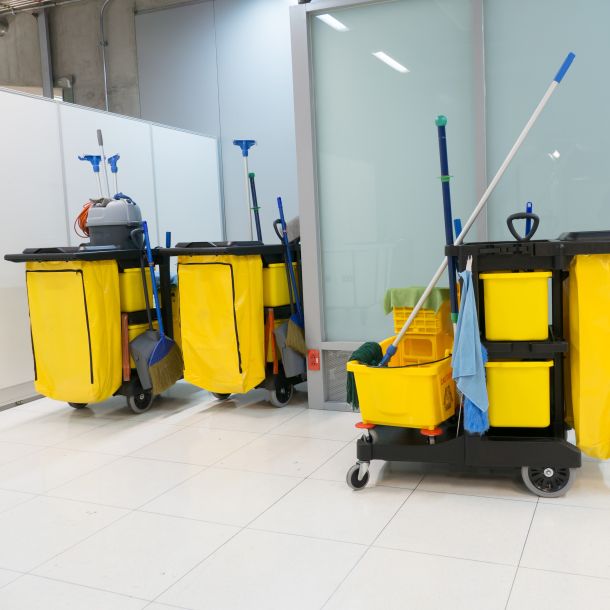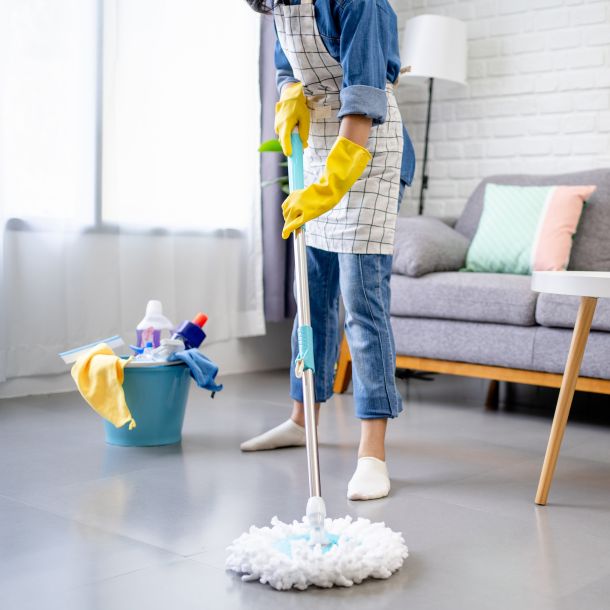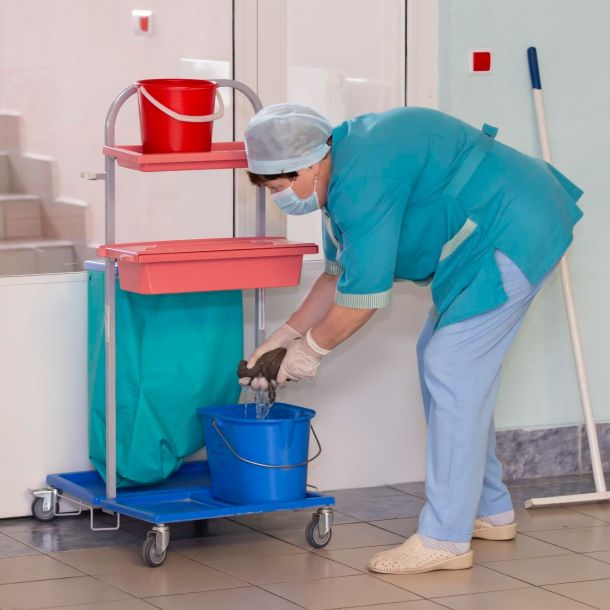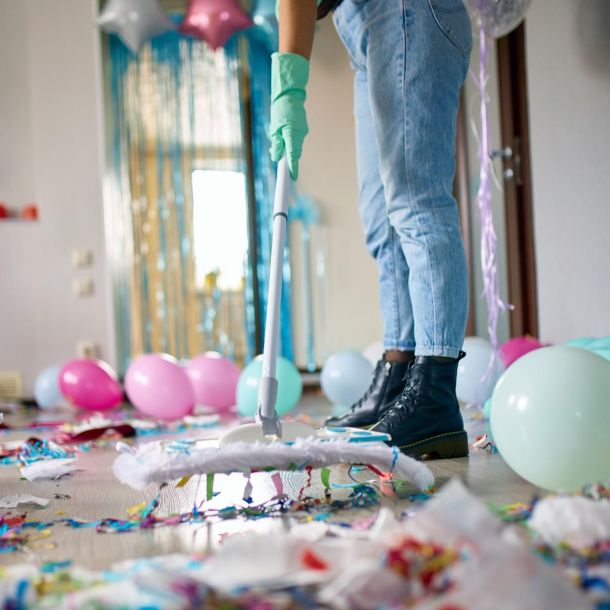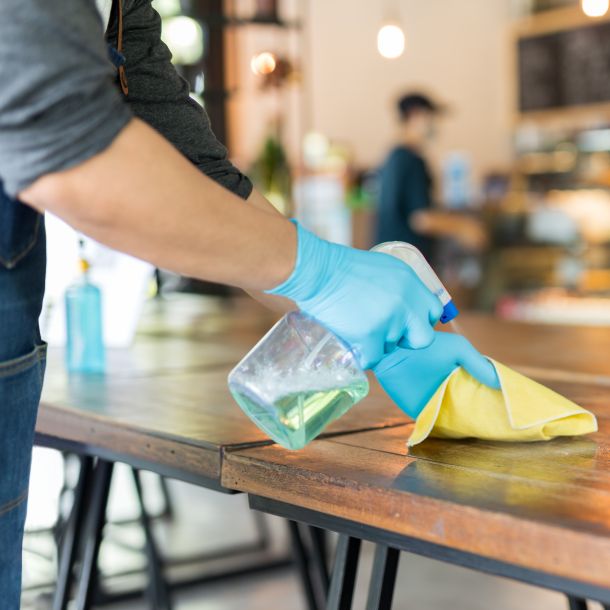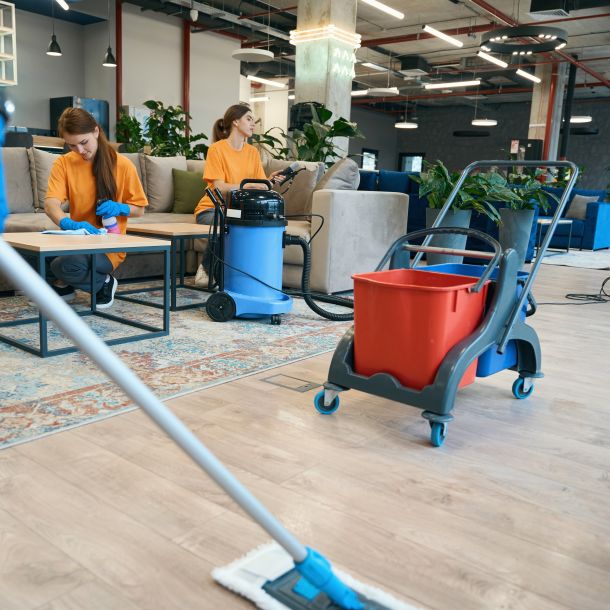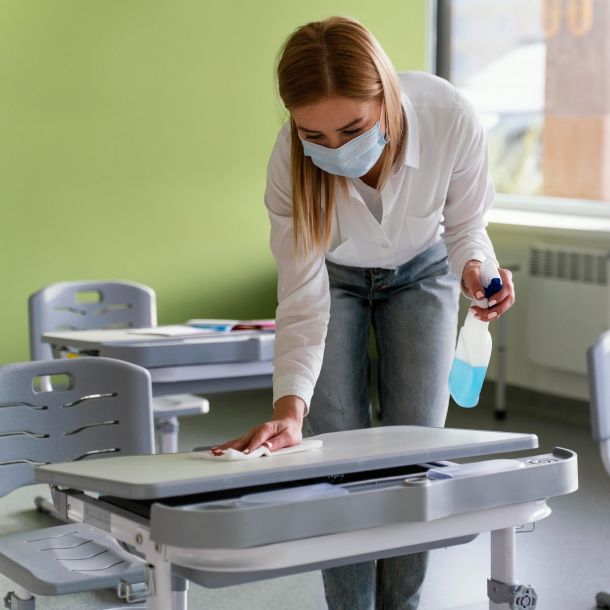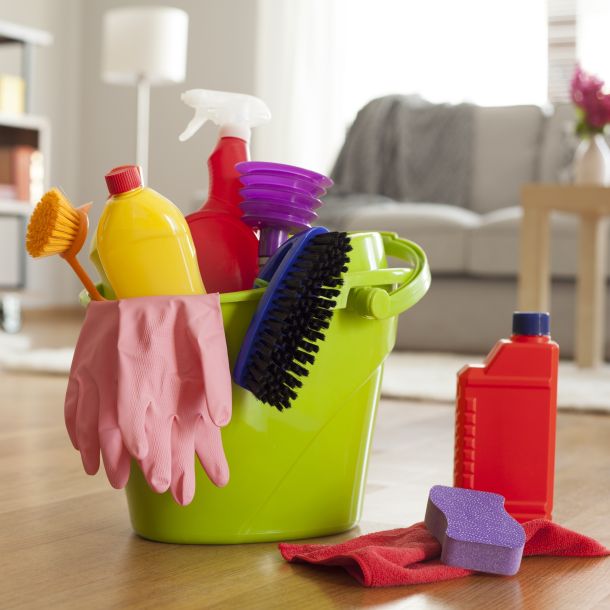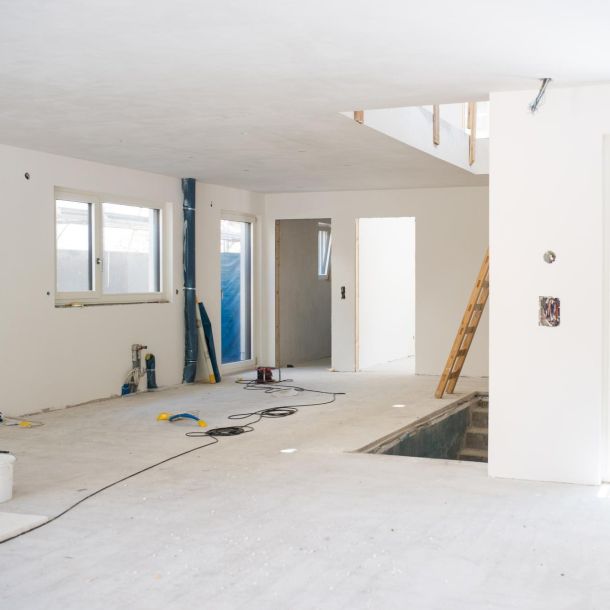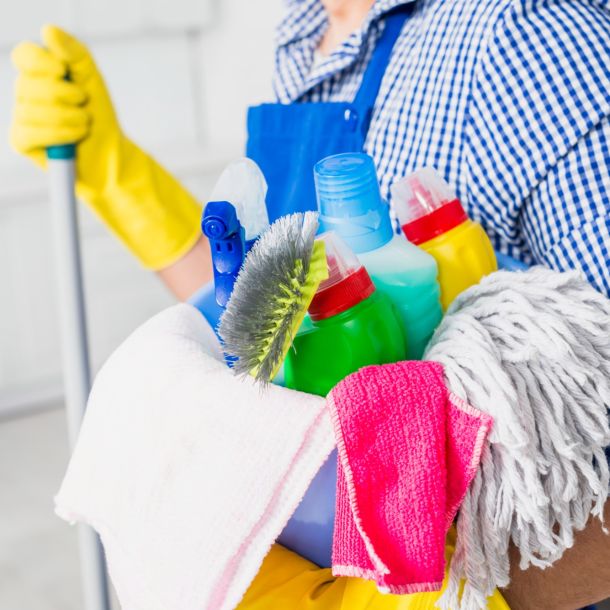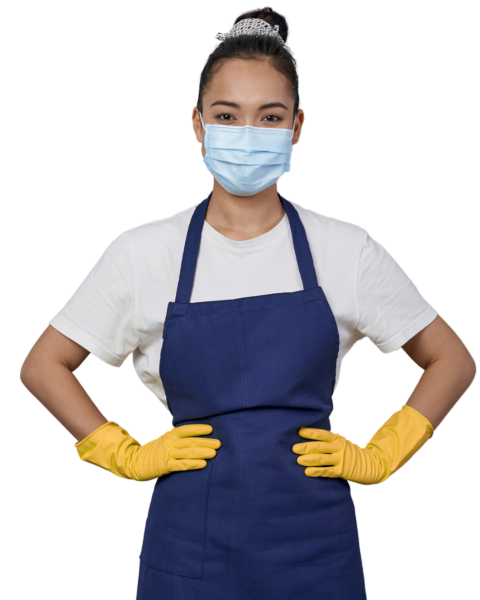Cleaning Tips & Tricks from Columbiana Experts
Top Practices for Cleaning Medical Facilities
Cleanliness in medical facilities is essential to ensure the safety, health, and well-being of patients, staff, and visitors. Unlike regular cleaning routines in homes or offices, healthcare environments require a higher level of precision and care due to the presence of pathogens and vulnerable individuals.
Medical facilities such as hospitals, clinics, dental offices, and outpatient centers must adhere to strict cleaning standards and protocols set by organizations like the Centers for Disease Control and Prevention (CDC) and the Occupational Safety and Health Administration (OSHA). By following best practices for cleaning and disinfection, healthcare providers can reduce the spread of infections, improve patient trust, and maintain a safe environment for all.
This blog outlines the top practices for cleaning medical facilities to ensure a germ-free, safe, and welcoming healthcare environment.
1️⃣ Follow Standardized Cleaning Protocols
Medical facilities must adhere to specific guidelines for cleaning and disinfecting patient areas, treatment rooms, and communal spaces. Following these protocols ensures that cleaning procedures are thorough, consistent, and compliant with health regulations.
Best Practices:
- Adopt CDC guidelines: Follow the CDC's recommendations for healthcare cleaning, especially regarding high-touch surfaces.
- Create a cleaning schedule: Develop daily, weekly, and monthly cleaning checklists for each area of the facility.
- Use color-coded cleaning tools: Assign specific colors for cleaning cloths and mop heads to prevent cross-contamination between areas like patient rooms, restrooms, and common areas.
- Ensure proper training: All cleaning staff should receive comprehensive training on infection control, chemical safety, and cleaning procedures.
Pro Tip: Conduct regular audits and inspections to ensure staff are following protocols and addressing any gaps in cleanliness.
2️⃣ Prioritize High-Touch Surfaces
High-touch surfaces are breeding grounds for bacteria and viruses. In a medical facility, these areas must be cleaned and disinfected frequently to prevent the spread of germs.
High-Touch Areas to Clean Frequently:
- Door handles and push plates
- Patient beds and bedrails
- Light switches and call buttons
- Chairs, armrests, and waiting room seating
- Touch screens, keyboards, and office phones
- Elevator buttons and handrails
- Restroom fixtures (faucets, sinks, and toilet handles)
Best Practices:
- Clean and disinfect high-touch surfaces multiple times a day.
- Use EPA-registered hospital-grade disinfectants that are effective against a broad spectrum of pathogens.
- Incorporate UV-C light disinfection or electrostatic spray technology for a deeper, more effective clean.
Pro Tip: Set up hand sanitizer stations near high-touch areas to encourage hand hygiene for patients, visitors, and staff.
3️⃣ Use Proper Cleaning and Disinfection Products
Not all cleaning products are suitable for healthcare environments. It’s crucial to use products that are EPA-registered, hospital-grade disinfectants with proven efficacy against pathogens like MRSA, C. difficile, and COVID-19.
Best Practices for Product Selection:
- Check EPA registration: Use disinfectants listed on the EPA’s “List N” for products effective against SARS-CoV-2 (the virus that causes COVID-19).
- Use hospital-grade disinfectants: These products are formulated to kill pathogens commonly found in medical environments.
- Read product labels: Follow dwell times (the amount of time a disinfectant needs to remain on a surface to kill pathogens) and usage instructions.
- Avoid harsh chemicals: Choose non-toxic, eco-friendly disinfectants when possible to protect patients and staff with allergies or sensitivities.
Pro Tip: Label cleaning products clearly to avoid misuse, and store them safely in secure areas away from patient access.
4️⃣ Implement Infection Control Measures
Infection control is one of the most critical aspects of cleaning medical facilities. Infection control protocols aim to prevent the spread of pathogens that can cause Healthcare-Associated Infections (HAIs).
Best Practices for Infection Control:
- Wear PPE (personal protective equipment): Cleaning staff should wear gloves, masks, and protective gowns as needed.
- Use proper hand hygiene: Staff should wash hands thoroughly before and after cleaning each area.
- Prevent cross-contamination: Use separate cleaning tools (mops, rags, and buckets) for patient rooms, exam rooms, and bathrooms.
- Disinfect reusable cleaning equipment: Tools like mop heads and microfiber cloths should be cleaned and sanitized after use.
Pro Tip: Create a strict "clean-to-dirty" workflow, meaning clean the least contaminated areas (like patient rooms) first and more contaminated areas (like bathrooms) last.
5️⃣ Focus on Air Quality and Ventilation
Airborne pathogens can circulate in healthcare settings, so maintaining good air quality is essential. Improved ventilation systems and air purification can help prevent airborne transmission of bacteria and viruses.
Best Practices for Air Quality:
- Install HEPA filters: HEPA (High-Efficiency Particulate Air) filters remove 99.97% of airborne particles, including dust, pollen, and pathogens.
- Clean air vents regularly: Remove dust and debris from HVAC systems to improve airflow.
- Use air purifiers: Portable air purifiers with UV-C technology can kill bacteria and viruses in the air.
- Keep humidity levels in check: High humidity promotes mold growth, while low humidity can dry out nasal passages, making people more susceptible to infection.
Pro Tip: Schedule routine HVAC maintenance to ensure proper airflow and filtration throughout the facility.
6️⃣ Pay Attention to Patient Rooms and Waiting Areas
Patient rooms and waiting areas experience high foot traffic, and patients with compromised immune systems are especially vulnerable to infections. Therefore, these areas require extra attention and disinfection.
Best Practices for Cleaning Patient Areas:
- Clean and disinfect after each patient visit: Beds, medical equipment, and touchpoints should be cleaned thoroughly after each patient is discharged.
- Launder linens properly: Wash patient bed linens and gowns with high-temperature water and hospital-grade detergents.
- Sanitize seating areas: Chairs, cushions, and armrests in waiting areas must be cleaned and disinfected daily.
Pro Tip: Space out chairs in waiting areas to promote social distancing and reduce the spread of airborne pathogens.
7️⃣ Pay Special Attention to Restrooms
Restrooms in medical facilities require meticulous cleaning and disinfection. Bathrooms are a high-traffic area where germs are easily spread.
Best Practices for Cleaning Restrooms:
- Disinfect frequently: Clean and disinfect sinks, toilets, urinals, faucets, and handles multiple times a day.
- Refill hygiene supplies: Ensure soap dispensers, hand sanitizers, and paper towels are always stocked.
- Use non-slip flooring: Clean spills and wet spots immediately to prevent slips and falls.
- Clean from top to bottom: Start with high surfaces (like mirrors and partitions) and work down to floors.
Pro Tip: Display “cleaning in progress” signs to ensure restroom users are aware of ongoing cleaning efforts.
8️⃣ Monitor Cleaning Staff Performance
Quality assurance is essential to ensure medical facilities remain safe and clean. Regular inspections and performance evaluations help identify gaps in cleaning procedures.
How to Monitor Cleaning Performance:
- Conduct random inspections: Perform surprise cleanliness checks to ensure compliance.
- Use cleaning checklists: Staff should document cleaning tasks to verify completion.
- Provide ongoing training: Stay up-to-date on the latest infection control protocols and train staff accordingly.
- Seek feedback: Collect feedback from medical staff and patients on cleanliness and respond to complaints quickly.
Pro Tip: Use cleaning logs to track which areas were cleaned, when, and by whom. This ensures accountability and transparency.
Why Proper Cleaning Matters in Medical Facilities
1️⃣ Prevents Infections: Proper cleaning reduces the risk of HAIs, protecting patients, staff, and visitors.
2️⃣ Ensures Regulatory Compliance: Medical facilities must meet strict health and safety standards.
3️⃣ Builds Patient Trust: Clean, fresh-smelling environments make patients feel safe and cared for.
4️⃣ Protects Staff and Visitors: Employees who work in clean environments are healthier, safer, and more productive.
Final Thoughts
Cleaning medical facilities requires precision, diligence, and a commitment to infection control. By implementing these best practices, healthcare providers can create safer, cleaner environments that protect patients, staff, and visitors.
If you're looking for professional cleaning services for medical facilities, Quintana Quality Services in Columbiana, AL offers specialized healthcare cleaning. We understand the unique challenges of maintaining cleanliness in medical environments and follow industry-leading protocols to ensure the highest standards of hygiene.
Contact us today for a consultation and let us help you create a safer, cleaner medical facility!
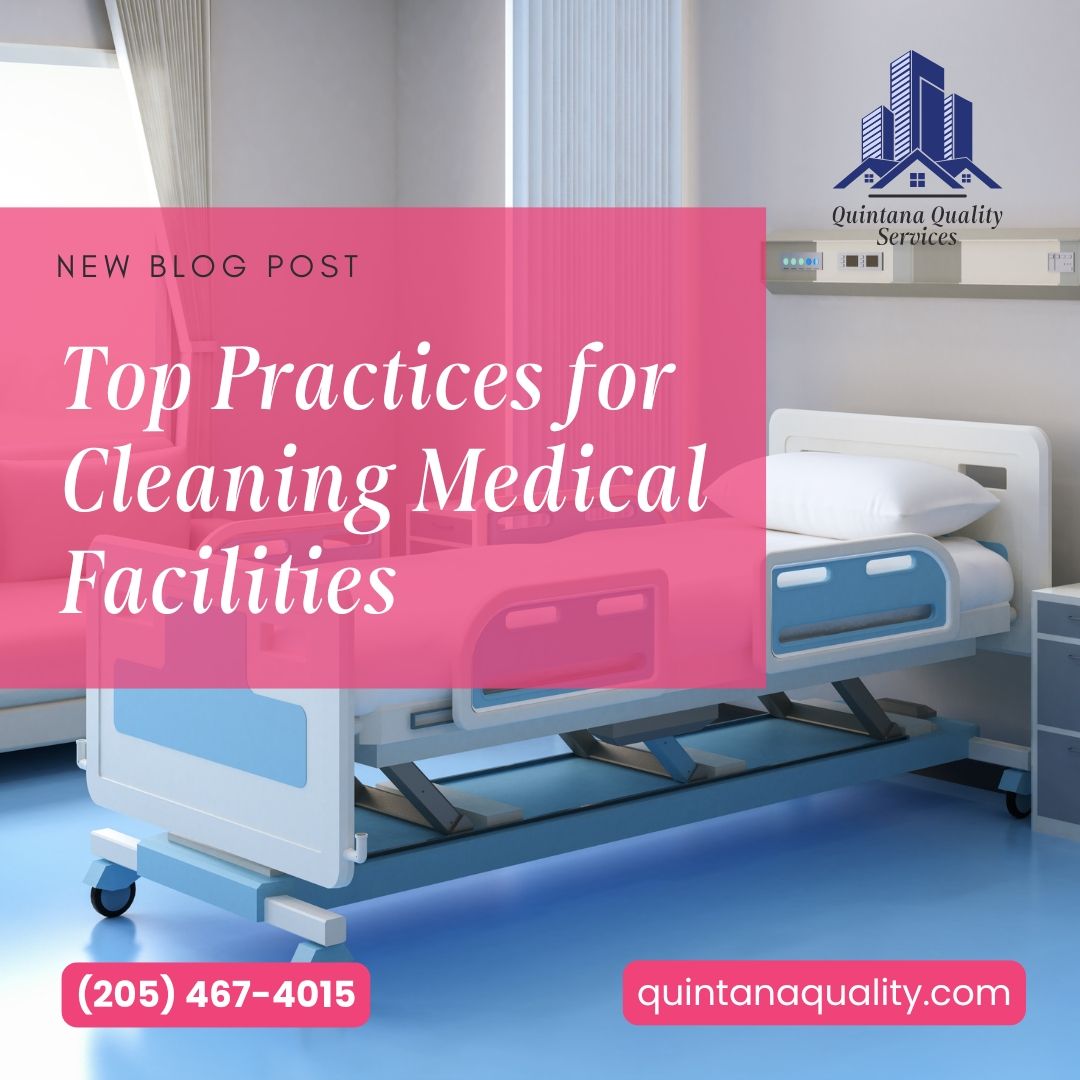
Welcome to our Blog! Here, we regularly update our readers with valuable insights, tips, and comprehensive guides related to our cleaning services and related topics. Whether you're seeking advice on maintaining a pristine home or office, looking for eco-friendly cleaning solutions, or simply want to stay informed about the latest in cleaning technology, our blog is your go-to resource. Quintana Quality Services is committed to creating new posts frequently, ensuring you have access to the latest information and expert advice to make your spaces shine. Visit us today to explore our latest entries and discover how you can enhance your cleaning routine!
Stay informed with the latest cleaning tips and industry insights on Quintana Quality Services' blog. Our experts share knowledge on maintaining your commercial and residential spaces pristine, offering advice and updates from Columbiana’s trusted cleaning service.
Cleaning tips blog Columbiana, Professional cleaning advice AL, Home cleaning solutions blog, Commercial cleaning insights Columbiana, Eco-friendly cleaning tips AL, Latest cleaning trends blog, Cleaning service guide Columbiana, Expert cleaning strategies AL, Cleaning hacks and tips blog, Residential cleaning blog Columbiana, Office cleaning advice AL, Seasonal cleaning guide blog, Deep cleaning techniques Columbiana, Organizational cleaning tips AL, Cleaning industry news blog

